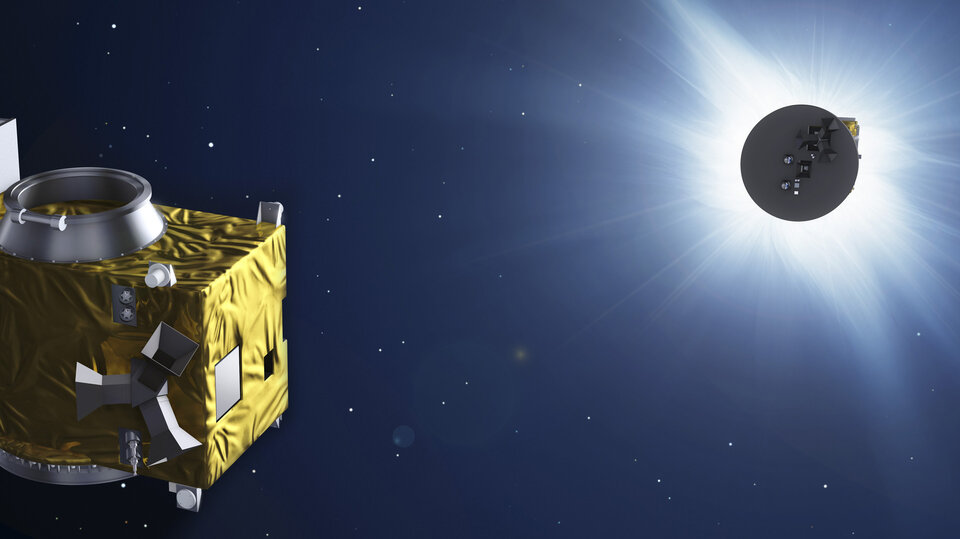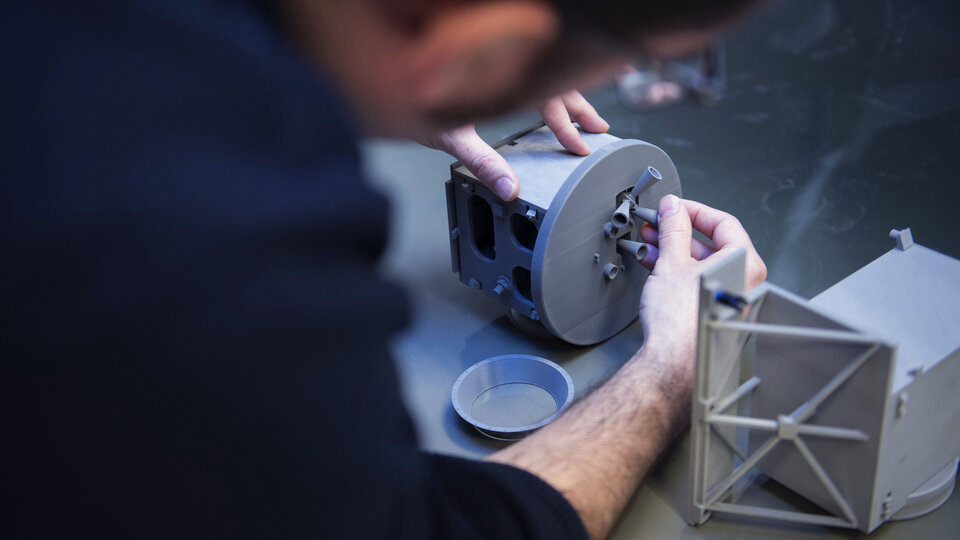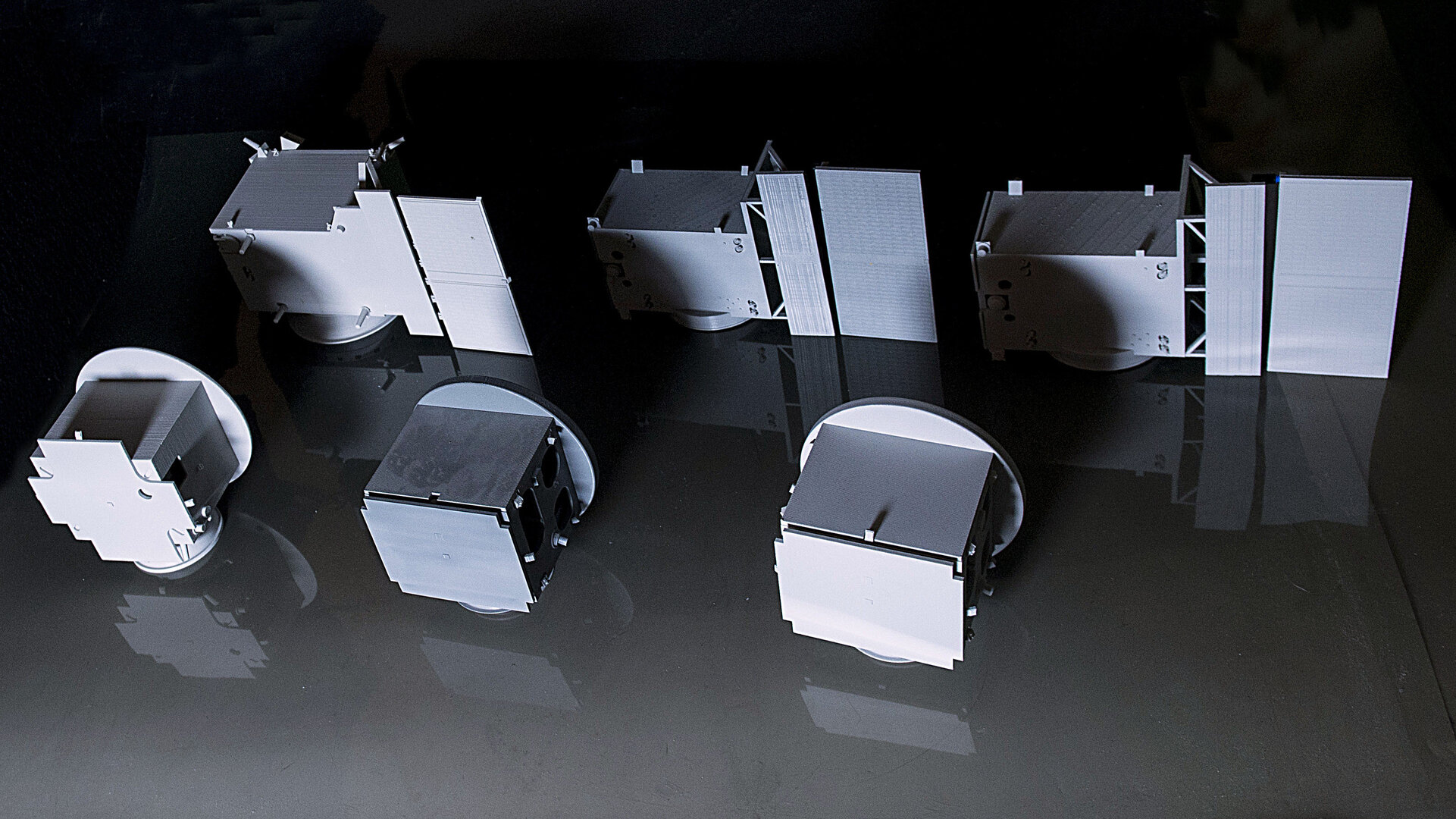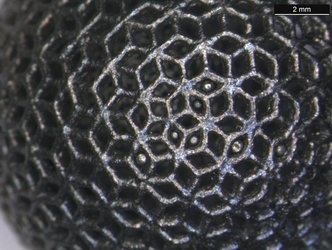Model progress of Proba-3 formation-fliers
The design evolution of ESA’s Proba-3 double satellite is shown by this trio of 3D-printed models, each pair – from left to right – produced after successive development milestones.
“These paired models, 3D printed in plastic, were not made for show,” explains Agnes Mestreau-Garreau, ESA’s project manager.
“Instead, they’re used almost daily. Because Proba-3 will be the first precision formation-flying mission – with the two satellites flying in tandem– these models help the team to visualise their orientation, as well as to explain the mission easily to people. So the models have ended up somewhat battered as a result.
“The first model set was printed after our System Requirements Review, followed by our Preliminary Design Review and now Mission Consolidation Milestone – with consequent changes in mission mass, volume and design details.“

The latest member of ESA’s experimental Proba minisatellite family, Proba-3’s paired satellites will manoeuvre relative to each other with millimetre and fraction-of-a-degree precision, intended to serve as the virtual equivalent of a giant structure in space and so open up a whole new way of running space missions.
As has become traditional with Proba missions, the success of Proba-3’s technology will be proven through acquiring high-quality scientific data. In this case, the smaller ‘occulter’ satellite will blot out the Sun’s fiery disc as viewed by the larger ‘coronagraph’ satellite, revealing mysterious regions of our parent star’s ghostly ‘corona’, or outer atmosphere.
When in Sun-observing mode, the two satellites will maintain formation exactly 150 m apart, lined up with the Sun so the occulter casts a shadow across the face of the coronagraph, blocking out solar glare to come closer to the Sun’s fiery surface than ever before, other than during frustratingly brief terrestrial solar eclipses.
The challenge is in keeping the satellites safely controlled and correctly positioned relative to each other. This will be accomplished using various new technologies, including bespoke formation-flying software, GPS information, intersatellite radio links, startrackers, and optical visual sensors and optical metrologies for close-up manoeuvring.
Fifteen ESA Member States are participating in the Proba-3 consortium, with SENER in Spain as prime contractor for the satellite platforms and Centre Spatial de Liège in Belgium as prime contractor for the coronagraph.
“This grouping includes several of the newer ESA Member States, including the Czech Republic, Poland and Romania,” adds Agnes.

“It is a strength of this kind of small but ambitious mission that new entrants to the space sector can find important industrial roles to play on a more flexible basis than in some larger-scale programmes.”
Proba-3’s next milestone will be the Payload Critical Design Review for its coronagraph, expected in the autumn followed by the System Critical Design Review for the mission. The two satellites will be stacked together for launch in 2019 before separating in orbit.








